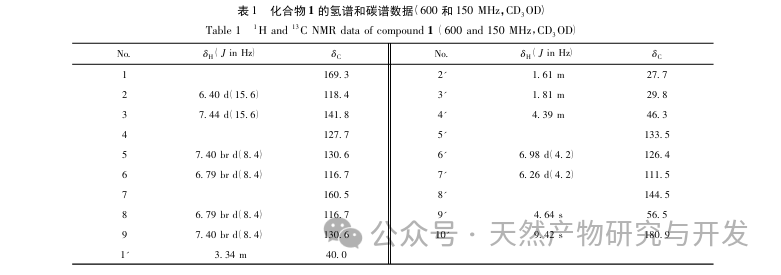A new amide alkaloid in the root of fake konjac
Piper sarmentosum is a perennial, creeping, node by node rooted herb of the Piperaceae family, commonly found in understory or roadside wetlands. It is mainly produced in provinces such as Yunnan, Fujian, and Guizhou in China, and is also distributed in India, Vietnam, the Philippines, and Malaysia. Fake konjac not only has rich medicinal value, but also has high ornamental, edible, and economic value. According to classics such as “Chinese Materia Medica”, fake konjac has a warm nature and a bitter and pungent taste. Its roots, leaves, and fruits can all be used as medicine, with the effects of warming the middle and dispersing cold, dispelling wind and dampness, reducing swelling and pain. It is commonly used in the treatment of stomach cold pain, rheumatic back pain, pregnancy edema, and traumatic bleeding, with significant therapeutic effects. Fake konjac leaves are widely used and cultivated as a seasoning in southern China’s Jiangsu, Zhejiang, and Guangdong regions due to their unique pungent aroma.
Modern pharmacological studies have shown that extracts of fake konjac have a wide range of biological activities, such as antioxidant, anti-inflammatory, antibacterial, insecticidal, hypoglycemic, and neuroprotective properties. At present, research on the chemical composition of fake konjac both domestically and internationally is mainly focused on the leaves and aboveground parts, with relatively less research on its underground roots. The chemical components isolated and identified from fake konjac include alkaloids, lignans, flavonoids, and sterols. Our research group isolated 7 alkaloid compounds from fake konjac leaves in the early stage, some of which showed good antibacterial activity against Staphylococcus aureus. In continuous research on the chemical composition and biological activity of fake konjac, it was found that the 95% ethanol extract of fake konjac root can alleviate the symptoms of mouse foot swelling induced by carrageenan and has a dose-dependent effect. Therefore, it is speculated that the extract contains anti-inflammatory active ingredients. Related studies have shown that alkaloids are the main active ingredients in the root of fake konjac. This experiment studied the chemical composition of the 95% ethanol extract of fake konjac root, and used the LPS induced RAW264.7 in vitro cell inflammation model to screen the anti-inflammatory activity of the obtained monomeric compounds. The aim is to clarify the chemical composition and related pharmacological substance basis of fake konjac root, in order to provide reference for further rational development and utilization of fake konjac plant resources.



This experiment used modern chromatographic separation techniques and spectroscopic methods to isolate and identify 10 alkaloid compounds from the root of fake konjac. Among them, compound 1 is a new amide alkaloid, and all compounds except compound 5 are isolated from this plant for the first time. The anti-inflammatory activity of the isolated compounds was evaluated using an LPS stimulated RAW264.7 macrophage inflammation model. The results showed that compounds 1, 2, 4, and 10 had inhibitory effects on NO production and did not exhibit significant cytotoxicity at the tested concentrations. The results of this study further enrich the chemical composition of fake konjac root and preliminarily clarify the basis of some anti-inflammatory active substances in fake konjac root, providing certain reference and theoretical basis for the future development and utilization of this plant resource.
